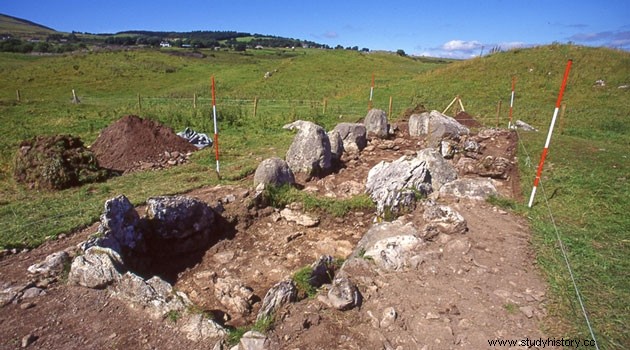A study published in Proceedings of the National Academy of Sciences by a team of international researchers led from Uppsala University, reveals the kinship relationships between Stone Age individuals buried in megalithic tombs in Ireland and Sweden. The relationship between the individuals buried in them goes back more than ten generations, and suggests that these megaliths were family tombs.
Agriculture spread across Europe with migrants from the Fertile Crescent around 9000 BC, reaching the Northwest of the continent around 4000 BC. From 4500 B.C. A new phenomenon of construction of megalithic monuments associated with funerary practices arose along the Atlantic façade.
The origin and social structure of the groups that erected them has remained largely unknown until now.

The researchers sequenced and analyzed the genomes of the human remains of 24 individuals from five megalithic tombs in northern and western Europe in Ireland, Scotland, and the island of Gotland in Sweden.
The remains were radiocarbon dated to between 3800 and 2600 BC. They compared those genetic data with the genetic variation of Stone Age groups and individuals in other parts of Europe, finding that the individuals from the megaliths were closely related to the Neolithic farmers of northern and western Europe, and also to some groups of the Iberian Peninsula, and less so with groups of farmers from Central Europe.
They found a higher proportion of men compared to women buried in graves in the British Isles. According to archaeogeneticist Helena Malmström, we find paternal continuity through time, including the same Y-chromosome halotypes repeating themselves over and over again. However, female family members were not excluded from megalithic burials, as three of the six kinship relationships in them were female .
Genetic data shows close family relationships between the buried individuals. According to Federico Sánchez-Quinte, from the University of Upsala, it seems that Neolithic societies were closely linked by family relationships around the tombs.

The Ansarve site on the island of Gotland shows that the people buried were markedly different genetically from contemporary individuals in the hunter-gatherer graves, which would show that the funerary tradition of that grave, which lasted more than 700 years, it was carried out by different groups with roots in the European Neolithic expansion.
The fact that distinct paternal lineages are found with an overrepresentation of males in some tombs, and the clear kinship relationships, suggest that the individuals were part of a patrilineal segment of society rather than representing a random sample of a broader community. large number of Neolithic farmers.
According to the researchers, the observed patterns could be unique to the Primrose, Carrowmore and Ansarve tombs studied, and future studies in other megalithic tombs will be needed to determine whether or not this is a general pattern.
